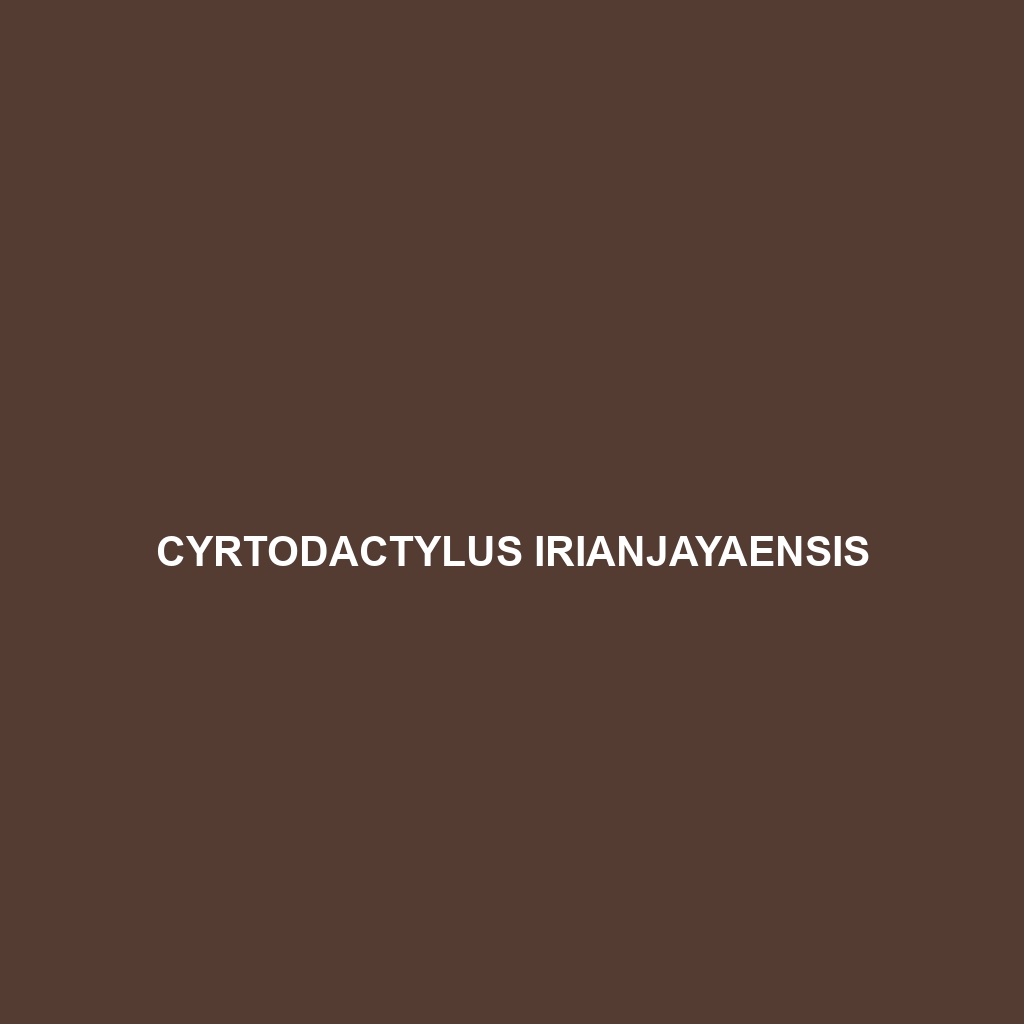Cyrtodactylus irianjayaensis Species Description
Common Name: Cyrtodactylus irianjayaensis
Scientific Name: Cyrtodactylus irianjayaensis
Habitat:
Cyrtodactylus irianjayaensis is primarily found in the lush rainforests of Irian Jaya, situated on the island of New Guinea. This species thrives in diverse environments, including lowland tropical forests and mountainous regions, where high humidity and dense vegetation provide optimal conditions for its survival. They are typically seen on rocky surfaces and tree trunks, making them well-adapted to their arboreal and terrestrial habitats.
Physical Characteristics:
This species of gecko averages around 10 to 20 centimeters in length, characterized by a slender body and long tails. The coloration of Cyrtodactylus irianjayaensis ranges from light brown to vibrant green, often featuring dark spots or stripes that provide effective camouflage against the forest floor and tree bark. Their well-developed toes are equipped with lamellae, aiding in climbing and gripping surfaces, which is a significant adaptation to their habitat.
Behavior:
Cyrtodactylus irianjayaensis exhibits nocturnal habits, meaning they are most active during the night. This species is known for its agile climbing abilities and can often be spotted basking on branches or darting swiftly across the forest floor in search of insects. Their elusive nature and quick reflexes help them escape predators and engage effectively in hunting.
Diet:
The diet of Cyrtodactylus irianjayaensis primarily consists of small insects and invertebrates, such as beetles, crickets, and moths. Their feeding habits include active foraging during nighttime, utilizing their keen sight and tactile senses to locate prey. This insectivorous diet is crucial for maintaining the population balance within their ecosystem and supports their metabolic needs.
Reproduction:
Cyrtodactylus irianjayaensis has a unique reproductive strategy, with mating occurring during the wet season, typically between December and February. Females lay one to two eggs in concealed locations, ensuring the safety of the offspring. The eggs incubate for approximately 60 days before hatching, and the young geckos are left to fend for themselves from birth, showcasing a strategy of independence from parental care.
Conservation Status:
As of the latest assessments, Cyrtodactylus irianjayaensis is considered vulnerable due to habitat loss driven by deforestation and land conversion for agricultural purposes. Conservation efforts are essential to protect their remaining habitats and ensure the survival of this unique gecko species.
Interesting Facts:
Cyrtodactylus irianjayaensis showcases an intriguing ability to change its coloration slightly for camouflage in its surrounding environment. Additionally, these geckos are known for their distinctive vocalizations during mating season, which play a crucial role in attracting mates and establishing territory.
Role in Ecosystem:
This species plays a key role in the ecosystem by controlling insect populations through its diet, which helps maintain the ecological balance within their habitat. As both predator and prey, Cyrtodactylus irianjayaensis contributes to the food web, supporting larger species that rely on them as a food source and helping to disperse seeds through their feeding habits.
